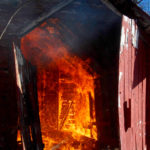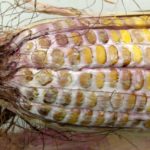The weather story continues this week with very little change across the province in terms of field activity, including fertilizer and pesticide application to wheat, manure application, field preparation and planting. A small number of acres were planted on the lighter soils across the province, where conditions permitted, but to date less than 10 per […] Read more
Limited progress seen with planting, seeding efforts
Ontario Field Crop Report for the week of May 13
Wet conditions dampen planting efforts, seeding seen limited
Ontario Field Crop Report for the week of May 6
Not much has happened in the fields since we met two weeks ago. Continued wet conditions, mostly from small rain events and low heat and little sunshine preventing drying, has hampered planting and other spring field activities so far. But the turn around starts now! CHU accumulated the first week of May at Mt. Forest […] Read more
Wet weather continues to delay spring seeding
Ontario Field Crop Report for the week of April 29
The past two weeks have been wet with very little getting done in the fields. Growers in the region are waiting for the weather to break and fields to dry out enough to carry equipment. While it is wet, there is very little flooding or standing water in the region. Regular, significant rainfall events keep […] Read more
Wet weather keeps farmers out of fields
Ontario Field Crop Report for the week of April 22
The snow in the north and wet weather in the rest of the province continues to prevent field work from occurring across the province. Widespread rain over the Easter weekend of 30 to 80 mm will delay field operations for another week. Temperatures are slowly improving with highs in the low double digits up to […] Read more

Top 10 ways to help prevent barn fires
Inspection and care of electrical systems, whether permanent or temporary, is part of a fire prevention plan in barns, says the agriculture department
Barn fires are a year-round concern, but most occur in the winter. The colder months are generally the time when feed and bedding storage is greatest, electricity use is high, and equipment repairs and upgrades are made. It is an important time to be extra vigilant. When it comes to barn fires, prevention is key. […] Read more

Plan to assess corn fields for ear rot and mycotoxin risk
Moulds can be disruptive when fed to livestock, especially hogs
The Ontario Ministry of Agriculture, Food and Rural Affairs has begun sampling grower corn fields to determine ear mould incidence and occurrence of mycotoxins in the grain. The mycotoxins, particularly vomitoxin (DON) produced primarily by Gibberella ear moulds, can be disruptive when fed to livestock, especially hogs. Why it matters: The annual survey is designed […] Read more

OMAFRA crop report: hail-damaged corn, later cover crops and winter canola
The opportunity to get some cover crops planted is coming to an end soon
Thunderstorms brought some localized hail events through parts of southwestern Ontario, particularly during the last week of July. Like most plant stresses, yield loss from defoliation increases through vegetative stages, peaks around tassel or pollination, and declines through grain-fill. For example, using the defoliation table from OMAFRA Agronomy Guide — Pub 811, estimated yield loss […] Read more
Corn rust comes early to Ontario
Frequent storm fronts from the southern U.S. and Mexico have brought common rust to Ontario cornfields relatively early this year compared to the past few seasons, the province said Friday. The storm fronts and “persistent” showers have been ideal for common rust to spread this year, said Albert Tenuta, a field crop pathologist with Ontario’s […] Read more


